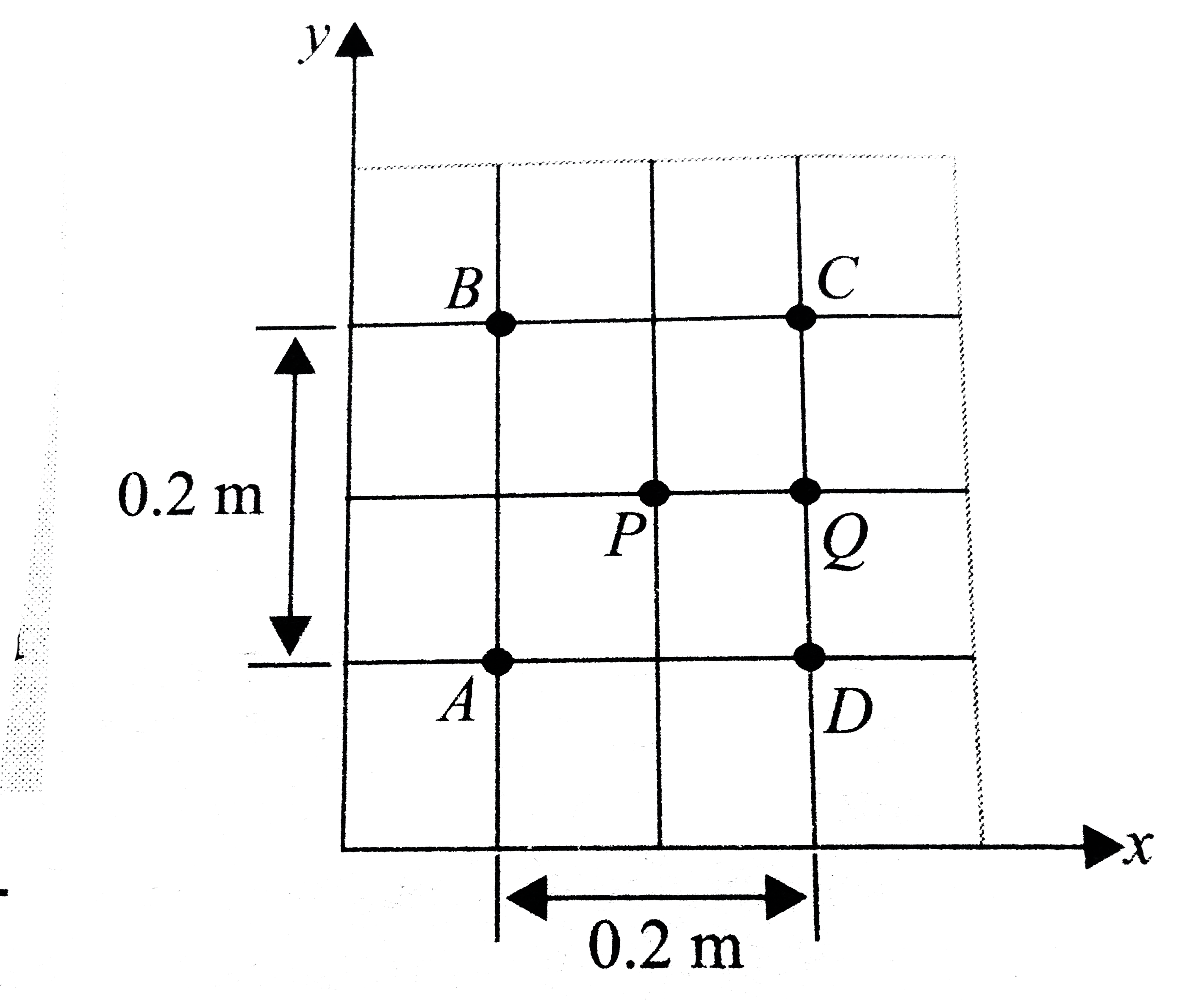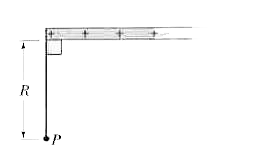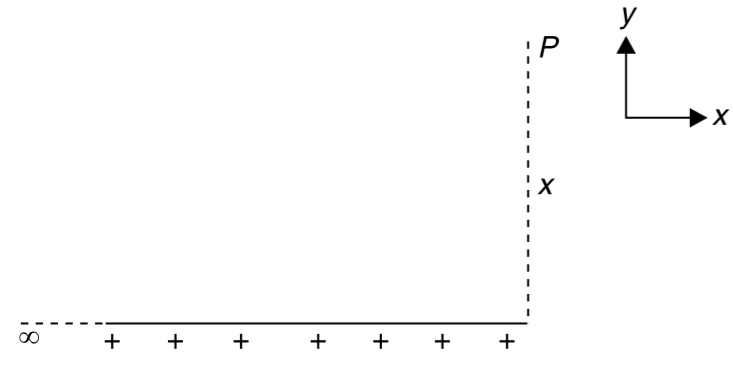The thin plastic rod of length L = 12.0 cm in Fig. 24-61 has a nonuniform linear charge density , where . With V = 0 at infinity, find the electric potential at point on the y axis at y = D = 3.56 cm. (b) Find the electric field component at . (c) Why cannot the field component at be found using the result of (a) ?
(a) (b)
Topper's Solved these Questions
- ELECTRIC POTENTIALBOOK - RESNICK AND HALLIDAYCHAPTER - ELECTRIC POTENTIALEXERCISE - (PRACTICE QUESTIONS) Single Correct Choice Type
21 Videos
- ELECTRIC POTENTIALBOOK - RESNICK AND HALLIDAYCHAPTER - ELECTRIC POTENTIALEXERCISE - (PRACTICE QUESTIONS) More than One Correct Choice Type
8 Videos
- ELECTRIC POTENTIALBOOK - RESNICK AND HALLIDAYCHAPTER - ELECTRIC POTENTIALEXERCISE - CHECKPOINT
6 Videos
- ELECTRIC CHARGES AND FIELDSBOOK - RESNICK AND HALLIDAYCHAPTER - ELECTRIC CHARGES AND FIELDSEXERCISE - Practice Questions (Integer Type )
3 Videos
- ELECTROMAGNETIC INDUCTIONBOOK - RESNICK AND HALLIDAYCHAPTER - ELECTROMAGNETIC INDUCTIONEXERCISE - PRACTICE QUESTIONS (Integer Type)
14 Videos
Similar Questions
Electric potential in a region of space is given by V=3x2V. What will be electric field intensity at a point P (2 m, 0).
View SolutionA, B, C, D, P, and Q are points in a uniform electric field. The potentials at these points are V(A)=2V.V(P)=V(B)=V(D)=5V, and V(C)=8V. Find the electric field at P.
 .
.
View Solution
Knowledge Check
A insulating cylindrical rod of diameter d and length l(l>>d) has a uniform surface charge density such that the electric field just outside the curved surface of the cylinder at point M is E0. Find the electric field due to charge distribuition at point P(r>>l).
 AE0ld2r2BE0ld4r2CE0ld3r2DE02ldr2
AE0ld2r2BE0ld4r2CE0ld3r2DE02ldr2
A, B, C, D, P, and Q are points in a uniform electric field. The potentials at these points are V(A)=2V.V(P)=V(B)=V(D)=5V, and V(C)=8V. Find the electric field at P.
 .
.
View SolutionElectric potential in space V(x,y,z) = (x2+y2+z2)V
Then the magnitude of electric field strength E at (1m, 0, 2m) in N/C is:
View SolutionA insulating cylindrical rod of diameter d and length l(l>>d) has a uniform surface charge density such that the electric field just outside the curved surface of the cylinder at point M is E0. Find the electric field due to charge distribuition at point P(r>>l).

View SolutionElectric potential in a region of space is given by V=(x2+y2+z2)V. What will be electric field intensity at a point P(-1m, 2m, -3m)?
View SolutionIn Fig. a "semi-infinite" nonconducting rod (that is, infinite in one direction only) has uniform linear charge density λ. (a) show that the electric field →Epat point P makes an angle 45∘ with the rod and that this result is independent of the distance R. (Hint : Separetly find the component of →Ep parallel to the rod and the component perpendicular to the rod.) (b) Find the the field magnitude for linear charge density 4.52 nC/m and R = 3.80 cm.

View Solution(a) There is an infinitely long thread uniformly charged with linear charge density λC/m. Using Gauss’ law, calculate the electric field (E0) at a distance x from the thread. (b) Now consider a semi-infinite uniformly charged thread (linear charge density =λ) as shown in figure. Find the y component of electric field at point P in terms of E0. Use simple qualitative argument. (c) For the situation described in (b) calculate the x component of electric field at point P using the method of integration. (d) Find the angle that the electric field at P makes with x direction.

View SolutionA wire AMB is placed along y-axis having linear charge density λ C/m. The electric field intensity at point P is ( PM=0.1 m)
View Solution
